Excluding Infotypes When Copying SAP OM Objects
Excluding Infotypes When Copying SAP OM Objects
Let’s consider a common scenario encountered in users’ daily interaction with the system. A specialist managing the company’s organizational structure may create new OM objects—such as positions—by copying existing ones. This approach saves time compared to creating a new object from scratch and manually filling in all the infotypes. However, there are always exceptions to the rule, and it’s possible that certain infotypes or data within them may not be needed for the new object.
Example
A position may have a relationship with an organizational unit (Infotype 1001), as well as links to objects Q (Qualification) and T (Task). It may also contain Infotype 1010 with some additional information. The organizational structure specialist wants to create a new position by copying an existing one. By default, all infotypes present in the source object will be copied to the new one. This is not always ideal for the user, so it’s important to be aware of the configuration option that allows excluding infotypes during object copying. Let’s examine this in more detail.
1. Initial Data
In the system, there is a position with the following infotypes:
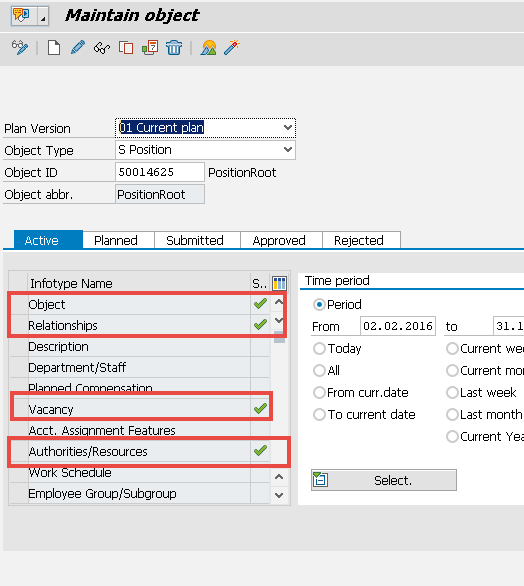
Infotype 1001 – Relationships includes the following connected objects:
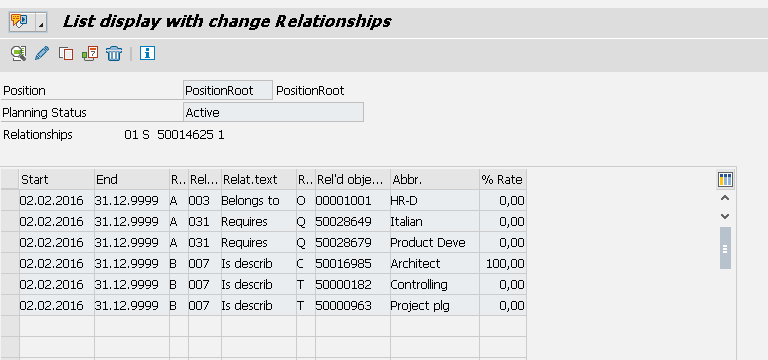
Additionally, the position contains Infotypes 1007 – Vacancy and 1010 – Capacity/Resources.
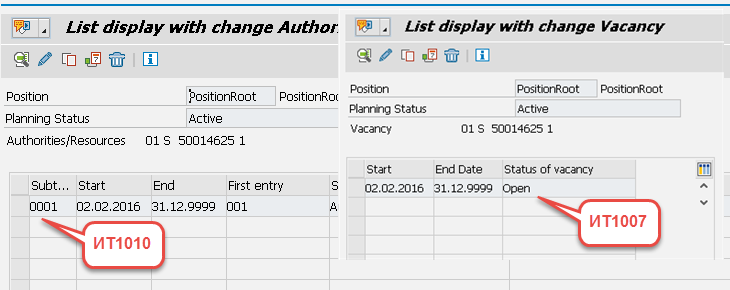
The specific content of these infotypes is not relevant for this note.
2. Task
Create a new object “Position” by copying the existing one from Section 1. While copying, exclude the following:
QandTobjects from Infotype1001- Infotype
1010entirely
3. Copying Objects – Part 1
Let’s first look at SAP’s standard logic. Using transaction PPOME, I create a new object by copying:
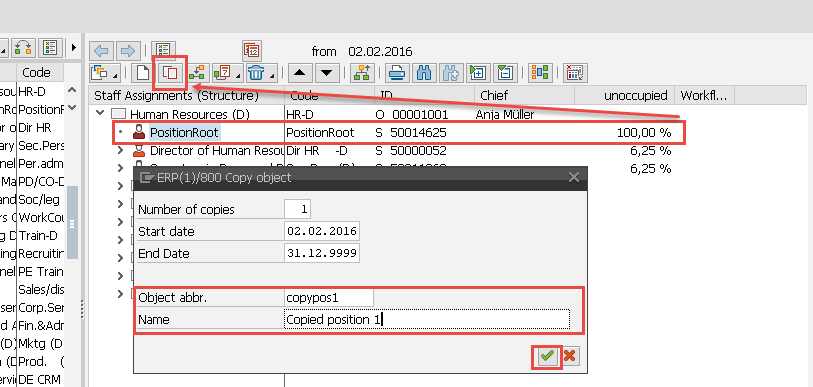
The copied object appears in the organizational structure:
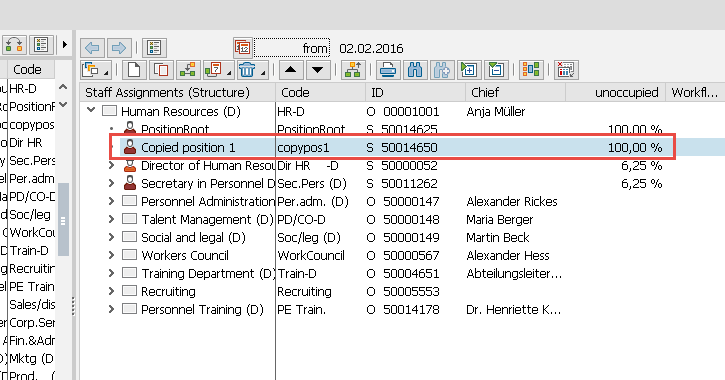
Open the copied object using transaction PP01:
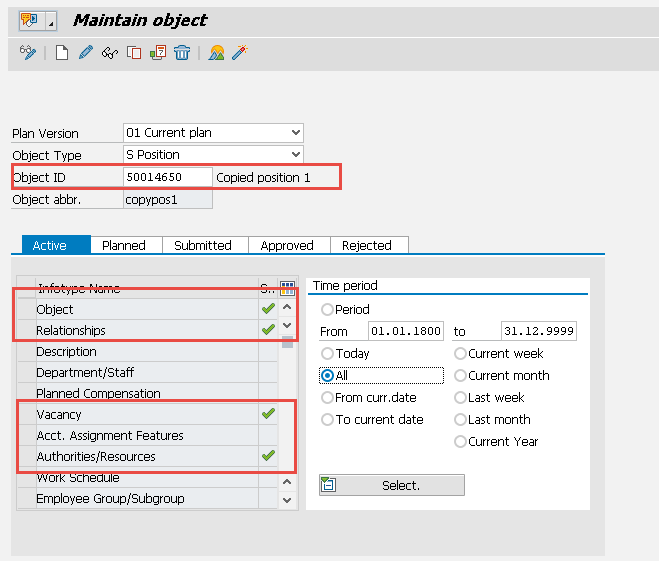
At first glance, it looks like all infotypes from the original object were copied into the new one. Each infotype contains identical information:
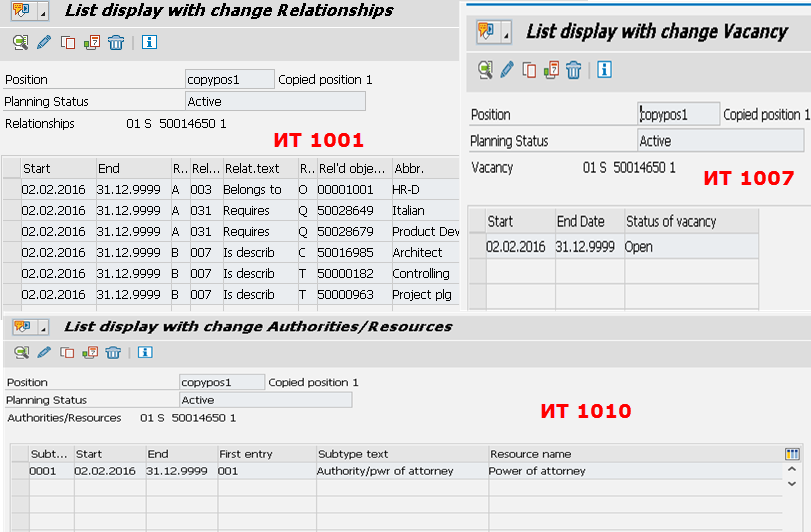
However, the task is to exclude Q and T objects from Infotype 1001 and exclude Infotype 1010 entirely when copying using PPOME.
4. Performing the Required Configuration
Open transaction SPRO and follow the path:IMG: Personnel Management → Organizational Management → Hierarchy Framework → Exclude Infotypes when Copying Internal Objects
Create entries like this:

N.B. Pay attention to the Scenario column, which restricts the scope of this configuration. In this case, the exclusion will apply only to transaction PPOME. You can identify the scenario name used in the transaction by adding the parameter OM_OBJM_SCEN_DISPLAY to user constants in transaction SU3.

After activating this parameter, launching PPOME will display the scenario name:
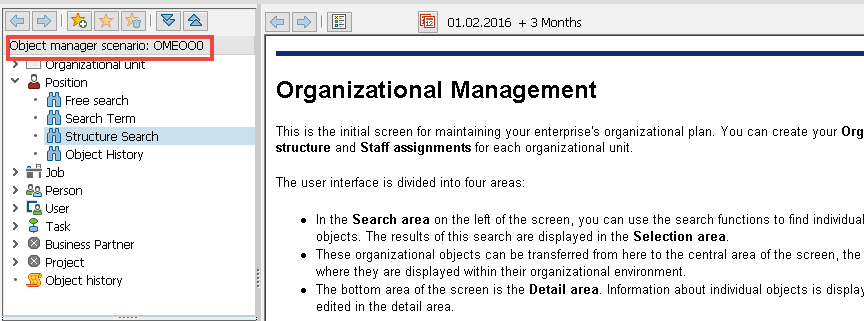
5. Copying Objects – Part 2
After completing the configuration, repeat the position copy operation based on the existing object.
N.B. After completing the settings from Section 4, restart PPOME.
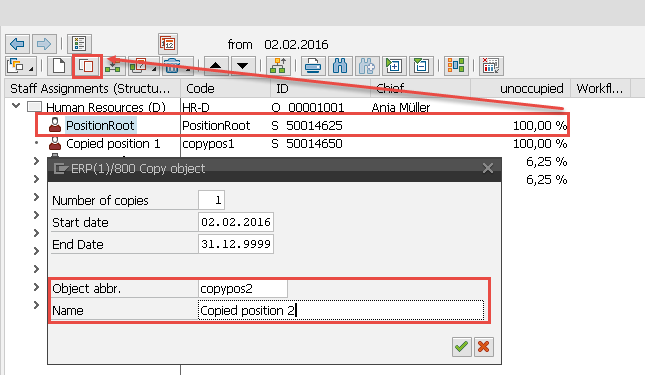
Check the copied object using PP01:
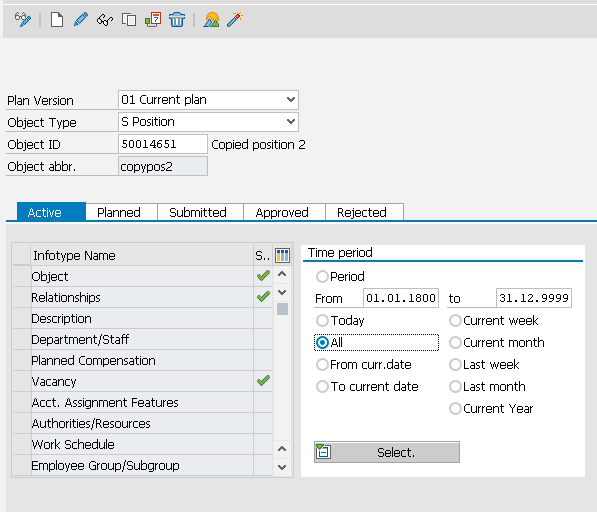
Infotype 1010 is missing. Now check Infotype 1001:
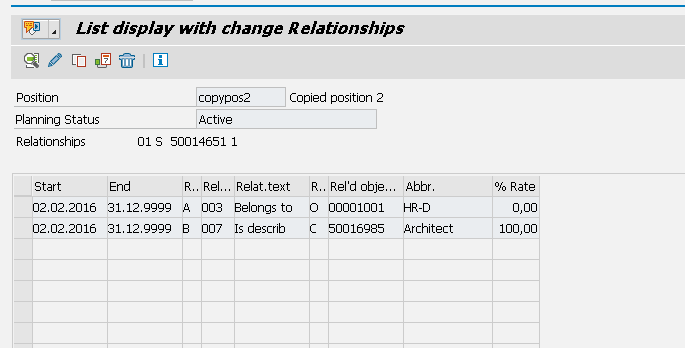
The expected result is achieved. The excluded infotypes were not copied to the new object. The task has been successfully completed.